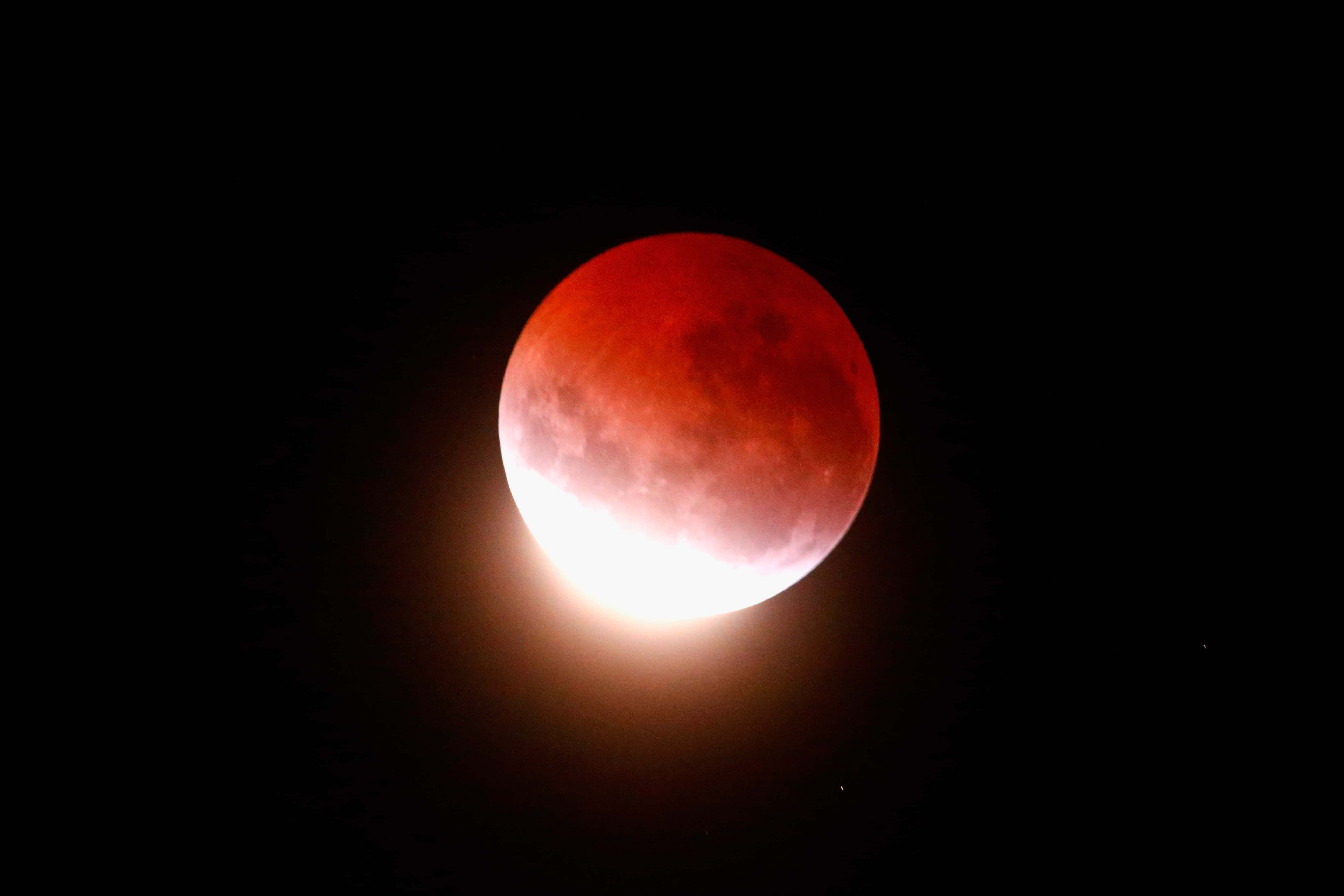'RED' lunar eclipse: When and how to watch once-in-600-yrs, longest celestial event

A 'nearly complete' lunar eclipse, the last for the year 2021, will take place on November 19. According to NASA, it will be longest and brightest partial lunar eclipse in 600 years, when 97 percent of the moon passes into the Earth's shadow.
The event will be best watched from North America, with Hawaii receiving complete 97 percent coverage. The Earth's shadow will block almost all of the sun's light from reaching the moon tonight (November 18), peaking early on Friday, November 19, at 09:02 GMT (04:02 ET).
RELATED ARTICLES
The duration of this partial lunar eclipse is noteworthy. The space agency has revealed that the partial eclipse this month will be the longest of the century, lasting nearly 3 hours and 28 minutes. In fact, much of the Western Hemisphere will be able to witness the moon turning red. "What's full and bright and red all over? Tonight's moon!" NASA tweeted on Thursday. "It's the longest partial lunar eclipse since 1440, and it's so close to total that much of the Western Hemisphere will be able to see the moon turn red in Earth's shadow." "Moongazers unite! The longest partial lunar eclipse of this century will occur overnight, peaking early Nov. 19 at 4:03am ET (09:03 UTC)," the tweet further read.
Moongazers unite! The longest partial lunar eclipse of this century will occur overnight, peaking early Nov. 19 at 4:03am ET (09:03 UTC).
— NASA (@NASA) November 18, 2021
Find out what parts of the world will be able to see it: https://t.co/wEuWtoZCMl pic.twitter.com/xtXjwbgvnl
What’s full and bright and red all over? Tonight’s Moon!
— NASA Moon (@NASAMoon) November 18, 2021
It’s the longest partial lunar eclipse since 1440, and it’s so close to total that much of the Western Hemisphere will be able to see the Moon turn red in Earth’s shadow.
How to #ObserveTheMoon: https://t.co/J9trqnx6mF pic.twitter.com/qdrXTXRGYF

What is a lunar eclipse?
An eclipse takes place when the moon or Earth passes into the shadow of other. A lunar eclipse is a rare occurrence that occurs when the Earth passes directly between the sun and the moon. When this occurs, the Earth blocks the sun's light from reaching the moon. The moon is then cast in the shadow of the Earth. We can see Earth's shadow on the moon during a lunar eclipse. They can persist for several hours, but total eclipses that continue for more than 100 minutes are rare. Every year, at least two lunar eclipses occur.
What a lunar eclipse looks like?
Lunar eclipses do not have the same dramatic appearance as solar eclipses, which appear to carve a black hole out of the sun's side. The moon darkens and usually takes on a crimson hue during a lunar eclipse. The Earth's shadow does not entirely cover the moon during a partial eclipse. Partial eclipses are still spectacular, however, tonight's will cover the majority of the moon.
Why does our moon turn red?

During a lunar eclipse, the same phenomena that color our skies blue and our sunsets crimson turns the Moon red. Rayleigh scattering is the name for this phenomenon. Light travels in waves, and the physical properties of different colors of light vary. Because blue light has a shorter wavelength than red light, it is scattered more easily by particles in the Earth's atmosphere. Red light passes through the atmosphere more quickly.
We see blue light throughout the sky when the Sun is overhead. When the Sun sets, however, the light must travel further and pass through more atmosphere before reaching our sight. Longer-wavelength red, orange, and yellow light passes through as the Sun's blue light scatters. The Moon turns red during a lunar eclipse because the only sunlight reaching it travels through Earth's atmosphere," said NASA, as reported by Space.com.
How can you watch the 'rare' lunar eclipse from your home?
There are several options to watch the Lunar Eclipse. The Virtual Telescope Project will go live with coverage of the eclipse at 11 pm PT on November 18 (7 am UTC on November 19). VTP is collaborating with astrophotographers from around the world and will also offer live commentary from astrophysicist Gianluca Masi.
Timeanddate.com will host its own live stream, which will begin Thursday, 11 pm PT. The Griffith Observatory in California is hosting its own broadcast as well, which will begin on Thursday at 10 pm PT. Alternatively, you can watch video feeds on social media if you just don't want to stay up late or get up early to watch the eclipse in person.
Eclipses aren't something that happens every day on Earth, and they're not always visible. While some viewers may have to deal with late-night programming for this month's celestial event, it's worth pausing to consider how the moon, the sun, and our planet are all related as inhabitants of this solar system.










